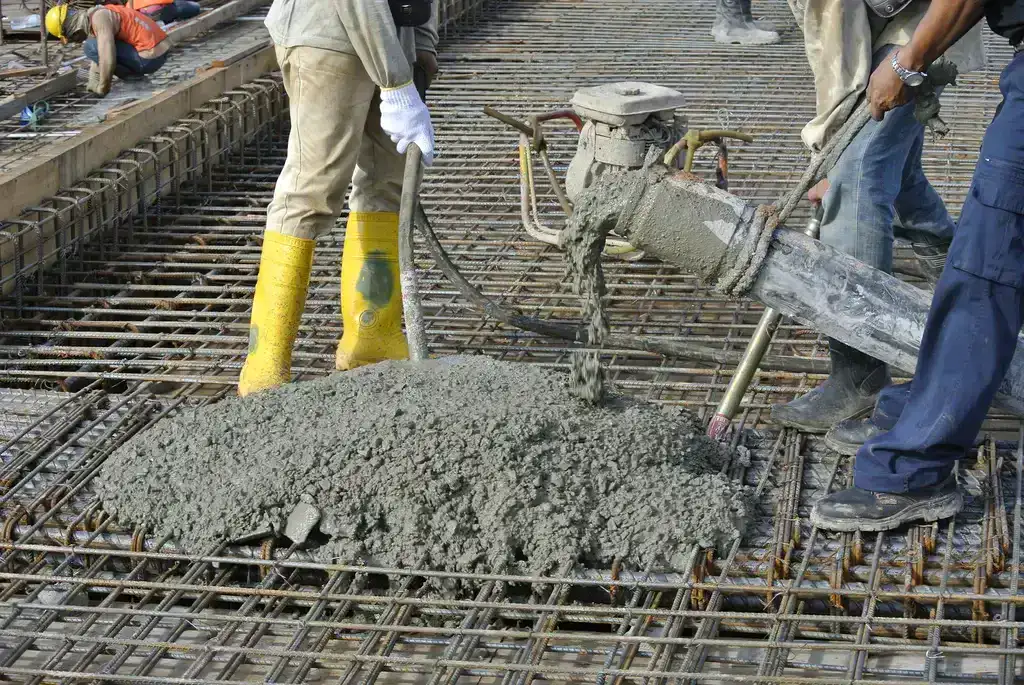The purpose of concrete testing in construction is to validate its strength for a safer structural foundation. Site engineers use different methods to test fresh concrete durability. We have discussed all the famous testing methods in this blog, so keep in touch!
A minor mistake in preparing concrete mixtures can disturb all the ratios and the engineers will not get the required consistency. As a result, the desired outcomes are not achieved, and concrete workability is not reliable. However, concrete is the most used natural material used in construction so never compromise on the quality due to its long-term performance. For this reason, builders and contractors are highly concerned with concrete testing in construction.
CONDUCT CONCRETE TESTING BEFORE STARTING THE PROCESS OF YOUR CONSTRUCTION PROJECTS AND ENSURE A QUALITY FOUNDATION TO PREVENT REWORK!
Which factors affect the most in production of concrete?
Three major factors that affect the production of concrete are as follows:
- Water-cement ratio
- Materials quality
- Quality-checks during concrete preparation
What things are tested in concrete inspection?
Various strength facets are being tested in concrete inspection. If anything is less or does not match the desired results, then the concrete mixture is not right to move on. Engineers look for several things, such as:
- Hardness
- Resistance to penetration by projectiles
- Rebound capacity
- Carbonation levels
- Ability to transmit ultrasonic pulses
- Delamination
- Corrosion of rebar inside concrete
If you are planning or are in the middle of the construction work, ensure you have enough concrete material. In this contemporary construction industry, sudden shortages and price fluctuations have become quite challenging for contractors to finish projects under budget. To overcome this, you can outsource Rebar Estimating from a well-known company.
Why Concrete testing in construction?
Concrete testing in construction is also essential to align it with industry standards. The main thing is to clinch the structural integrity of the buildings, which does not require repairs shortly.
In addition, the contractors and builders are well aware of the concrete and how much its load-bearing capacity. This is how design and other important things are planned.
Concrete is prepared according to the work done for example, beams, columns, and pillars need the most powerfully built concrete. Hence, all these factors combine to enhance the safety of the occupants and the building’s foundation.
Famous Methods of Concrete Testing!
1. Penetration method
The penetration method is conducted through the Windsor Probe, which is a popular tool to test how deep something can penetrate concrete. However, it is like a special gun that fires a tough probe into the concrete.
2. Rebound hammer method
A rebound hammer method is used to test the hardness of the surface. Moreover, it consists of a spring-controlled hammer to measure bounce-back distance, which is shown on the scale.
3. Pull out the test method
In the pull-out test method, a steel rod is used, which has been pre-made into the concrete. After that, the builders or engineers pull out the rod and measure the force or pressure required to pull out the rod from the concrete mixture.
4. Ultrasonic pulse velocity method
The ultrasonic pulse velocity method is used for concrete testing by sending sound waves through it. However, it is done in two ways: pulse velocity method, in which a probe is placed on each side of concrete. Sound waves are generated, which are inspected by the experts. They check how fast the waves have traveled. The second one is the echo method, where a probe is sent and received from the same side for analyzing echo signals.
5. Carbonation testing
This type of test is conducted because when the carbon dioxide (CO2) from the air mixes with the concrete, corrosion starts. This thing destroys the protection film on the rebar. For this reason, a carbonation test is conducted to check the depth of the damage it has caused. To check, phenolphthalein solution is mixed in alcohol and sprayed on the concrete. Experts drill and spray into the concrete and flush it with deionized water.
6. Half-Cell potential testing
This is another method to measure how much concrete is damaged, steel, and rebars. Moreover, this test also measures the electrical resistance of the concrete between a point on the surface.
7. Concrete Sounding
This type of test is conducted with the help of a hammer to check concrete splits. The splitting occurs when concrete is separated from a rebar within. But how does one understand the issue through sound? A good quality concrete will always make a vibrating or ringing sound. Whereas, poor concrete will give a dull sound because sound waves will not travel through the concrete because of the splits.
CONTACT OUR EXPERT TEAM OF ESTIMATORS TO HANDLE ALL FINANCIAL-RELATED THINGS AND COVER YOUR PROJECT UNDER BUDGET!
Final Words
To sum it up, Concrete testing in construction holds strong importance in maintaining the life of a structure. Just find the best method for your project by doing some research. However, testing must also be included in the initial planning of the project to cover the expenses. The best approach is to hire a concrete estimation expert because they know all the critical tests that need to be conducted before starting the construction process.

